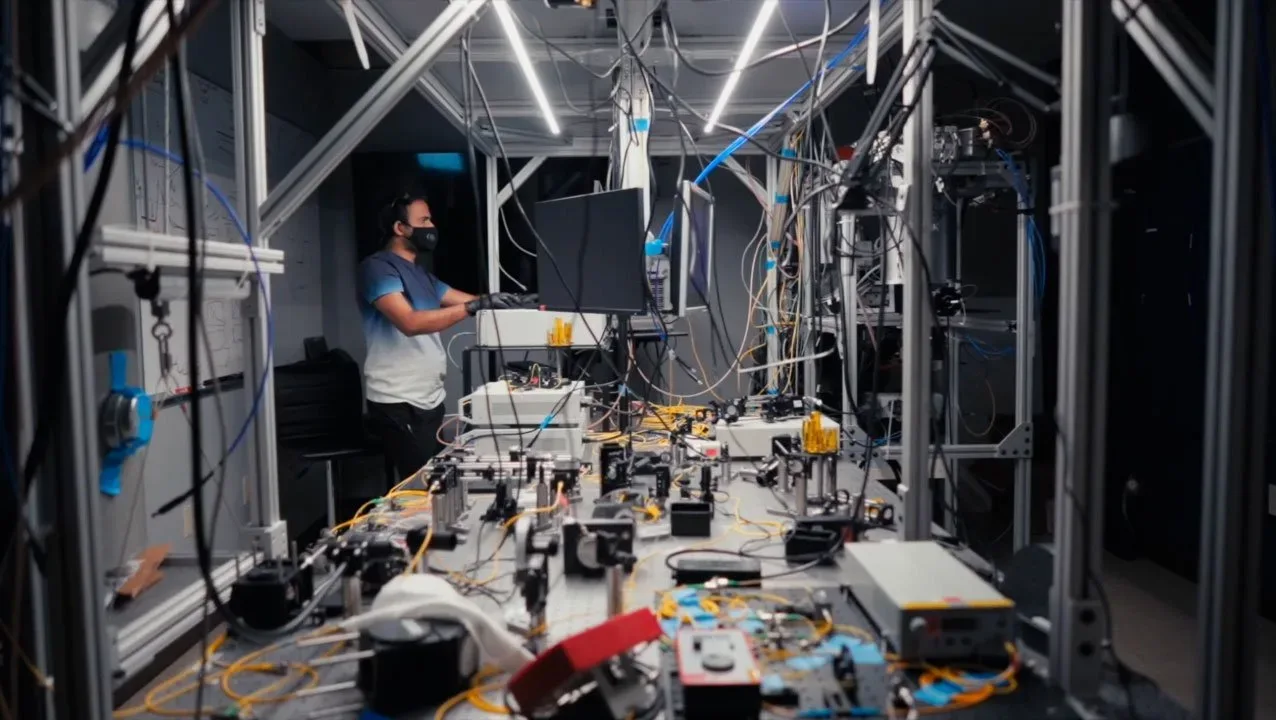A team of Caltech researchers and collaborators from the Jet Propulsion Laboratory (JPL) worked with Fermilab’s researchers to establish two testbeds. Using commonly available material and cutting edge quantum devices, they were able to teleport quantum information for a sustained period, sending the information to a point 44 kilometres away.
The work, which is published in PRX Quantum, contains the theoretical modeling of the experimental setup, a world first. We wrote recently a feature about the Quantum Internet, and how it will change the future.
An important step in establish quantum internet in the near future, this research can revolutionize many fields, including data storage, secure communication, computing, and precision sensing.
‘We are very proud to have achieved this milestone on sustainable, high-performing, and scalable quantum teleportation systems. The results will be further improved with system upgrades we are expecting to complete by Q2 [second quarter of] 2021.’
Maria Spiropulu, Shang-Yi Ch’en Professor of Physics at Caltech and director of the research program
Quantum internet sees information stored in qubits before being teleported across long distances through entanglement. Entanglement is when particles are linked to each other even though large distances divide them. Quantum networks have a high quality of teleportation, possessing a 90 percent fidelity rating in the case of this experiment.
“This high fidelity is important especially in the case of quantum networks designed to connect advanced quantum devices, including quantum sensors.”
Maria Spiropulu, Shang-Yi Ch’en Professor of Physics at Caltech and director of the research program
These measurements were taken on both the Caltech and Fermilab Quantum Network testbeds (QCNET and FQNET), which are teleportation systems designed, built, and commissioned by Caltech’s multidisciplinary and multi-institutional programme called Intelligent Quantum Networks and Technologies (IN-Q-NET). This programme was founded by both Caltech and AT&T jointly. Fermilab and JPL were involved since the beginning, offering their expertise and capabilities to the programme.

The use of cutting edge solid-state light detectors in a compact fibre-based setup in these network testbeds are unique. The networks also have data acquisition, control, monitoring, synchronisation, and analysis, all near-autonomous and requiring little human input. The teleportation systems are even compatible with existing telecommunication infrastructures as well as emerging quantum devices, all geared towards making practical quantum internet a reality. The FQNET and CQNET networks are now used to improve the rate and fidelity of entanglement distribution, focusing on complicated protocols and fundamental science. Multidisciplinary researchers are allowed access to the network as well for research and development. Both quantum information science and the development of advanced quantum technologies are being benefitted from the study of these networks.
‘The impressive demonstration of quantum teleportation in realistic materials at realistic rates brings us closer to exploiting the advantages of entanglement in quantum networks. We look forward to further breakthroughs from this ambitious collaboration.’
Caltech president Thomas F. Rosenbaum, the Sonja and William Davidow Presidential Chair
About Caltech
Caltech is a science and engineering institute known worldwide that works with experts to tackle scientific and societal problems. Involved in research ranging from quantum science to human behaviour, the institute is small but ambitious. It is based in Pasadena, California, USA. You can find the original press release here from Caltech.

